Don M. Winn's Blog, page 21
November 25, 2015
Don M. Winn Student Interview Part 1
Austin Community College student Christi Esquivel recently interviewed me for a class assignment. She was gracious enough to allow me to share her paper, although it’s been edited some for content and length. By the way, she got a 100 on the interview.
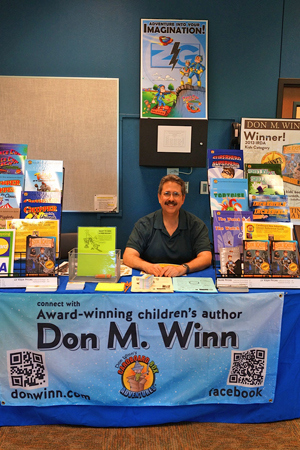 Christi: What are some common obstacles to becoming an author?
Christi: What are some common obstacles to becoming an author?
Don: To write a book and have it be commercially successful the biggest obstacle is the publishing industry itself. The entire market has changed significantly in the past few years. In the past, if you produced a book, your agent and publisher would help you get the attention of the media, but now, thanks largely to independent book publishing, 4000 plus books are put on the market every day. A book is not news anymore. You have to work very hard to get any attention at all, let alone make the kind of splash big publishing houses can make. If you want the media to pay attention to you, you have to show them what you’re doing is interesting. That’s a huge hurdle to overcome.
Another obstacle is the people who say, “Oh, everyone wants to do that. You’re not going to be able to make anything from doing that.” It’s true that many writers generally have some other job they do to support their writing, especially early on. It’s very rare to start making money right away. It can take many years. The important thing is to enjoy what you’re doing, write for fun, for the pure enjoyment of the process, keep working on your writing, keep putting things out there. At the same time, you’ll probably be doing something else to make some money, but eventually, if you stick with it, something good can come from it.
Christi: What is a typical work week?
Don: Well, in addition to my 40-hour work week, I’m always up by 4 A.M. I spend every usable minute before I leave for work doing author work. It may be social media, working on a blog, making marketing decisions, etc. Usually by the end of the day I’m responding to emails, maybe coming up with ideas, writing things down. Sometimes I wake up in the middle of the night with ideas. Basically, it encompasses all aspects of your life, because it’s not something you can turn off, like, okay—I go to work, punch a timecard, and then I’m done. The writing process is an art, it’s creative, and so you’re always looking for opportunities and ideas for stories. They could come at any time, and you have to jump on them when that happens, when you have that inspiration. Sometimes inspiration doesn’t come quickly and you have to do things to help. I’ve found it helps to get away and go out for a walk, because a lot of good ideas come to me when I’m doing something physical, like yard work or exercise. So for me, a typical week is very full. It is tremendously challenging to carve out blocks of time to write.
Christi: How could I advance?
Don: When I first learned to write as a kid, I didn’t like it. Being dyslexic, I was terrible at it and I avoided it whenever possible. But in the workplace, you have to be able to communicate in writing. Since I like to read things that are short and concise, I began writing that way for work. People told me I was a really good communicator. Eventually I realized writing was just like speaking. I had to figure out how to get my thoughts from my mind, but instead of expressing them by mouth, I needed to use a pen or keyboard. The development of word processors was the number one tool that made a difference for me, because if I had to actually write my books by hand, I couldn’t do it—nothing ever comes out right. I can barely make a signature in cursive writing, and have to print if a keyboard isn’t available. This is called dysgraphia and is not uncommon among dyslexics.

Don in a scene from Chipper and the Unicycle
When I can type on a word processor, just letting my thoughts flow and then saving my typed thoughts so I can go back later and rearrange words, it makes writing so much easier. Having that tool available to me and having to write every day just for normal communication on the job helped to strengthen my writing and communication skills. Eventually I started writing poetry. Poetry is short. I could finish something, write a nice little poem. When I started doing that I found it really cathartic. I could stretch my thoughts, write fun stuff, go outside my comfort zone. I wrote hundreds of little poems, and then, through that process, ideas for children’s books surfaced. I wrote them in rhyme, so they were poetic in nature. By 2009 I realized I really needed to do something with my stories. So I published The Tortoise and the Hairpiece. Several picture books later, I started doing school visits and the students asked me, “When are you going to do books for older readers?” That’s when the Sir Kaye series was born. Advancing as a writer is a series of progressions. You start small and then things grow organically. I started doing my blog. In the beginning, once in a blue moon I came up with a topic as I was learning the process and figuring out the type of content I wanted to offer. Now I post material nearly every week. My goal is to be a resource related to children, education, child development, learning challenges including dyslexia, and so forth. One recommendation for blogging is to start with things you enjoy and have a blog where you post stuff about something you really like and share your thoughts about it.
Tune in next week for part two of Christi’s interview.


November 18, 2015
5 Harmful Misperceptions About Dyslexia—Spread the Word!
I have the best readers! And I love it when you share your experiences. So many of us with dyslexia have not felt heard or understood until very recently, with the influx of new data about our condition, and it’s so life-affirming to hear your stories. Please keep ’em coming!
One of my goals with this blog is to promote dyslexia awareness because despite new research about the condition, so many misconceptions and inaccurate beliefs are still rampant. Why is it important to set the record straight?
Because dyslexia is not something that can be “cured” or reversed by any means: diet, exercises, medication, herbs, or talk therapy. So when a caring reader shares an experience based on something that seemed to “fix” their loved one, I always want to redirect the conversation to firmer ground in a kind way.
It’s very important to make sure that parents whose kids have true dyslexia have realistic expectations for their loved ones and the resources to understand the full scope of their children’s needs.
How disheartening it would be for a dyslexic child who had faithfully followed some form of “treatment” if a parent or teacher showed disappointment or frustration because the child’s dyslexia did not “resolve.” The last thing dyslexic kids need is more shame.
 Earlier a kind reader sent in her child’s experience with doing some kinesthetic exercises to help integrate both sides of his brain. There are lots of tried-and-true left/right brain integration exercises like the one her son benefitted from, and they can be quite effective for a number of situations. In this child’s case, he had been reversing some of his letters when writing, and so was thought to be dyslexic. After the exercises, though, his issues happily resolved. While I’m certainly delighted that her child no longer struggles to write, can all parents of struggling readers/writers expect similar outcomes?
Earlier a kind reader sent in her child’s experience with doing some kinesthetic exercises to help integrate both sides of his brain. There are lots of tried-and-true left/right brain integration exercises like the one her son benefitted from, and they can be quite effective for a number of situations. In this child’s case, he had been reversing some of his letters when writing, and so was thought to be dyslexic. After the exercises, though, his issues happily resolved. While I’m certainly delighted that her child no longer struggles to write, can all parents of struggling readers/writers expect similar outcomes?
No.
Misperception #1: “All kids who reverse their b’s and d’s have dyslexia.” Actually that is not the case; science has proven otherwise. Please refer to the Yale Center for Dyslexia and Creativity if you’d like to know more. Personally, I have trained myself to overcome letter reversal in my printing, (I can’t write cursive) but I am still quite dyslexic, and have all its other complications, I assure you! In addition, not all dyslexics reverse similarly-shaped letters.
Therefore, kinesthetic exercises or other techniques which can potentially help some struggling students to strengthen left/right brain activity will not remedy dyslexia.
It is also not a dietary problem. No amount of bone broth, medicinal herbs, green juices, or other wholesome foods will reverse dyslexia. While I eat an unprocessed diet with plenty of plant foods, and encourage others to do the same, it’s not because of believing that food impacts dyslexia.
Misperception #2: “Dyslexia can be outgrown.” Nope. Kids with dyslexia are not developmentally delayed, nor is the problem temporary. Dyslexia is a life-long difference in the way the brain processes information.
 Misperception #3: “Dyslexia is really about social anxiety or lack of maturity.” Not a chance. Having a student repeat a grade and teaching him/her the very same way will not improve the student’s skills. Social maturity will not improve the student’s ability to read. Like many of you, I repeated first grade, which left me even more behind and plagued with lower self-esteem than ever.
Misperception #3: “Dyslexia is really about social anxiety or lack of maturity.” Not a chance. Having a student repeat a grade and teaching him/her the very same way will not improve the student’s skills. Social maturity will not improve the student’s ability to read. Like many of you, I repeated first grade, which left me even more behind and plagued with lower self-esteem than ever.
Misperception #4: “People with dyslexia see things backwards, therefore dyslexia is a vision problem.” No, people with dyslexia do not “see” things backwards; our brains process language information differently. Vision therapy does not improve dyslexia.
Misperception #5: “Kids with dyslexia are lazy. They just need to try harder.” This is one of the most poisonous. To decide that dyslexic kids have character issues, or aren’t motivated enough to do good work is profoundly harmful. Lack of awareness about the disorder among educators and parents has often resulted in kids being branded as “lazy.” Nothing could be farther from the truth. Instead, the findings of fMRI studies provide evidence that people with dyslexia are not poorly taught, lazy, or stupid, but have an inborn brain difference that has nothing to do with intelligence. If students with dyslexia do not receive the right type of intervention and/or classroom accommodations, they often struggle in school—despite being bright, motivated, and spending hours on homework assignments. In almost all cases, kids with dyslexia are actually working much harder than their peers, and should be acknowledged for doing so.
These are just a few common misconceptions about dyslexia. What mistaken beliefs have you come across in your discussions about dyslexia? I’d love to hear from you.


November 3, 2015
The Best Books Missing From Your Child’s Bookcase
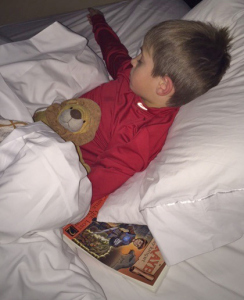
Connor read The Lost Castle Treasure all on his own.
As we approach the end of another year, and people start thinking about gifts for their loved ones, I have cause to reflect back over my journey with Cardboard Box Adventures Publishing these last 6 years. When I published my first Cardboard Box Adventures picture book in 2009, The Tortoise and the Hairpiece, I had all the trepidations of a first-time author. My objective with my picture books was to encourage the kind of lap-reading I enjoyed with my grandmother, and to help parents engage children in conversation with questions at the back of the book. Since then, with 10 picture books and two chapter books on the shelf and with a third chapter book in the works, I’ve been touched and grateful to receive abundant feedback and photos from readers and reviewers about their experiences with Cardboard Box Adventures books.
One of my favorite quotes is from the Family Review Center, who awarded my picture book, Superhero, Best of The Year in 2014.
“I love Cardboard Box Adventures Books because they not only teach valuable lessons, but they do so in a manner that will last throughout a lifetime. By not only hearing a story read, but then using the page of questions at the end, you can strike up a conversation with your child to be assured that they have been listening and understanding the story and can now discuss ways to implement what they have learned into their everyday life.” —Family Review Center
These gifts of feedback are very precious to me as a writer and publisher and make any continued efforts on behalf of my readers a joy. Here are a few of the heartfelt words of appreciation from some of my readers, along with some reader-supplied photos.
Sarah, whose 8-year-old son Jack is a struggling reader, shared that he didn’t want to stop reading his Sir Kaye, the Boy Knight book, The Knighting of Sir Kaye. Reluctant to set it aside for dinner, he ate as quickly as possible so he could dash back up to his room and read until bedtime. He did so, brought the book to the breakfast table the next morning, and continued reading in the car on the way to school. Upon completion of the book the next day, he bubbled over with excitement as he shared favorite plot twists with his parents, lamenting the fact that the book was finished, and eagerly asked if the second book in the series was out. Such was his enthusiasm that The Knighting of Sir Kaye was the first chapter book Jack had ever read all by himself, without prompting.
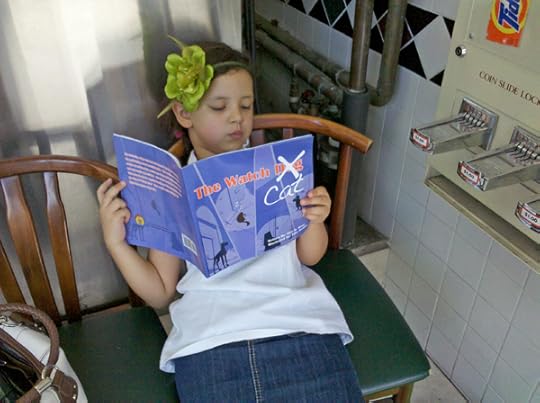
Camilla enjoys The Watch Cat.
Dan, an 80-something grandfather, bought books for his grandchildren but enjoyed reading them so much that he bought a second set of books for the grandkids so he could keep a set himself. Dan states, “The Sir Kaye series reminds me of my boyhood exploits.”
Emma, 12, suffers from dyslexia, and was so encouraged to know that dyslexics can become not just proficient readers but writers, that she has started keeping a journal with story ideas. She is especially fond of the anthropomorphic story lines from the CBA picture books, and is writing stories about her guinea pig.
Michael, an 8-year-old boy with autism, loves his rhyming picture books so much that each night before bed he wants to hear the stories of his beloved characters, and listens to his audiobook version of the story compilations so he can go to sleep dreaming of his favorite friends.
From a parent about The Knighting of Sir Kaye audio book: “We sat and listened together on the edge of our seats! They absolutely loved it, as did I, and they’ve already started listening to it again! I LOVED, LOVED, LOVED the fact that this was a fun (and wholesome) story that was TOTALLY age appropriate for my 9-year-old son, but was still completely enjoyed by my 8-year-old daughter as well!”
Rachel, mother of 8-year-old Connor, says, “My son continues his love of reading because of you.”
From a parent who was a guest reader in her daughter’s classroom: “I have been guest reader many times and students always want to converse after the story is over. Having the questions at the end created a richer educational dialogue that I enjoyed most.”
From a grandfather who read The Tortoise and the Hairpiece with his grandson: “I was amused at the rhyming as was [my grandson]. The new word, regale, caused us to discuss the meaning. The art work is excellent. I received a studio art degree many years ago and recognize your illustrations as first rate.”
From a grandparent: “I discussed [the questions] with my granddaughter and they gave her a great opportunity to practice both listening skills (she’s learning to read) and recall of detail.”
Sign up for my (Don M. Winn’s Cardboard Box Adventures) free email newsletter and be the first to get the latest news and happenings at CBA Publishing. Click here to sign up.
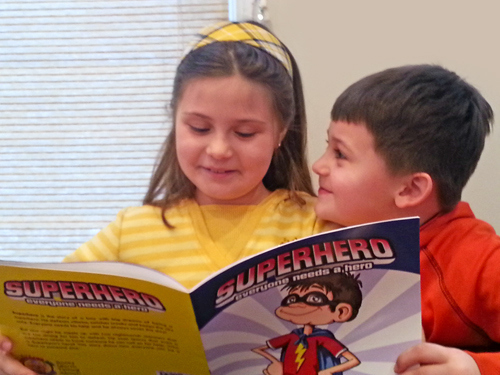
Ben and Sophie took some time together to read Superhero.
What has Cardboard Box Adventures Publishing been up to over the last year?
Sir Kaye Series
The Lost Castle Treasure, the second book in the Sir Kaye, the Boy Knight series to follow the award-winning first book, The Knighting of Sir Kaye, was published along with the audio edition. The third book in the series, Legend of the Forest Beast, is well underway along with simultaneous development of the fourth book in the series that will conclude the four book story arc—but not to worry, there will probably be more standalone Sir Kaye adventures after book four.
 Begin the adventure with the first book in the series, The Knighting of Sir Kaye and then follow up with second book in the series, The Lost Castle Treasure. Read more about the series along with a sneak peek of both books at About the Sir Kaye Series.
Begin the adventure with the first book in the series, The Knighting of Sir Kaye and then follow up with second book in the series, The Lost Castle Treasure. Read more about the series along with a sneak peek of both books at About the Sir Kaye Series.
Available from Amazon, Barnes and Noble, the iTunes Store, and Audible.
What reviewers are saying about the Sir Kaye books:
“Fortitude, good will, and friendship triumph in this enjoyable story.” —Publishers Weekly
“A lively and adventurous kids’ book, full of gentle humor and warmth.” —IndieReader Review
“A fun, exciting adventure…a fantastic role model for kids.”
—Wishing Shelf Awards
CBA picture books
This year we also published two picture book collection volumes with 4 picture books in each volume. Volume One contains the award-winning stories The Tortoise and the Hairpiece, The Incredible Martin O’Shea, The Watch Cat, and Shelby the Cat. Volume One also has an audio book companion available from Audible.com. Volume Two contains the award-winning stories Chipper the Clown, Chipper and the Unicycle, The Higgledy-Piggledy Pigeon, and Twitch the Squirrel and the Forbidden Bridge.
 Available from Amazon and Audible.
Available from Amazon and Audible.
Don’t forget Superhero and Space Cop Zack, Protector of the Galaxy, very popular, multiple award-winning books which are not included in either of the picture book collection volumes.
 If you have not yet read any Cardboard Box Adventures picture books this is a great time to do so. As individual books or as a collection, each story has a fun teaching theme that parents can use to illustrate important life lessons as well as questions for discussion. For a list of topics contained in each CBA book check out the Lesson Reference Guide.
If you have not yet read any Cardboard Box Adventures picture books this is a great time to do so. As individual books or as a collection, each story has a fun teaching theme that parents can use to illustrate important life lessons as well as questions for discussion. For a list of topics contained in each CBA book check out the Lesson Reference Guide.
The hardcover picture books have additional creativity questions at the end that can be used to help kids to use their imaginations and “think outside the book.”
My picture books and the Sir Kaye the Boy Knight chapter book series for middle readers make great gifts and are available as softcovers, hardcovers, and eBooks from Amazon, Barnes and Noble, and the iTunes store, as well as your other favorite online retailers.
Don’t forget to sign up for my free email newsletter and be the first to get the latest news and happenings at CBA Publishing. Click here to sign up.


October 19, 2015
Dyslexia: When It’s as Good as It Gets
The 1997 movie, As Good as It Gets, has a line of dialog that made a lasting impression on me. In the movie, the protagonist, a man that suffers from OCD, played by Jack Nicholson, barges into his psychiatrist’s office and demands to be seen immediately. He was told to make an appointment and then summarily dismissed. As he exits the doctor’s office through the lobby full of depressed psychiatric patients, he pauses for a moment and then says loud enough for all to hear, “What if this is as good as it gets?”
I’ve recently reached that point in my life with dyslexia, a realization actually, that this is as good as it gets. What do I mean by that? Although I have definite strengths that I’ve been able to use to my advantage, there are quite a few things that I’ll never be able to do well or quickly.
 I get frustrated when I’m just finishing the first chapter of a book in the time it takes the average person to read the entire book. Then there’s my difficulty with sequencing—I’ll never make a good file clerk because I’d be reciting the alphabet all day long to remember where each letter falls in the sequence. I have problems with my sense of direction—determining the points of a compass while driving never works well. Sequencing issues also show up while driving and trying to follow directions. If I’m told more than 2 turns ahead, I can’t keep it all in order. Or the searing panic and frustration I feel when someone sends me a lengthy document and breezily says, “I need your feedback on that in 10 minutes.” And the list goes on.
I get frustrated when I’m just finishing the first chapter of a book in the time it takes the average person to read the entire book. Then there’s my difficulty with sequencing—I’ll never make a good file clerk because I’d be reciting the alphabet all day long to remember where each letter falls in the sequence. I have problems with my sense of direction—determining the points of a compass while driving never works well. Sequencing issues also show up while driving and trying to follow directions. If I’m told more than 2 turns ahead, I can’t keep it all in order. Or the searing panic and frustration I feel when someone sends me a lengthy document and breezily says, “I need your feedback on that in 10 minutes.” And the list goes on.
I’ll never read faster than I do right now. My spelling will always be inconsistent, and words never look quite ‘right’ even when I haven’t misspelled them. Writing, like reading, will always be laborious and time consuming, never automatic. These are areas where I have to accept the fact that this is as good as it gets.
 Dyslexia is something you need to own and accept. It’s always with you. It never goes away.
Dyslexia is something you need to own and accept. It’s always with you. It never goes away.
Owning it is not an easy thing to do, especially when you’ve spent a lifetime dancing around the problem, trying to compensate, doing your best to appear ‘normal’ so your vulnerability doesn’t show. Owning our own ‘stuff’ is the only way out of the shame that has accrued throughout a lifetime as a result of ridicule. Coming to terms with the things we can’t change is an important part of authentic maturity, and fosters a peaceful heart that can learn to cope with the fact that life is never going to be fair.
Perspective is a great place to start. For example, around 151,000 people die each day. If any of them were first offered an opportunity to trade places with one of us dyslexics for a chance to live even a little bit longer, they would jump at the opportunity, no matter what the cost or what kind of a hot mess our life might seem to us. Life is precious and oh-so-finite, averaging a mere 27,000 days long, and the better we can become at appreciating the good things we have and can accomplish, the more we can learn to be ok with the things we would not have chosen about ourselves.
(Check out this video that represents the days of our life in jellybeans for a quick jolt of perspective.)
Do we have two working eyes with which to view the sunset and the faces of our loved ones? Or two ears that can hear the breeze rustling the leaves this fall, or birdsong, or a Bach partita? Are we mobile enough to get around on our own steam? Can we still enjoy a delicious meal with good friends? Have we ever performed an act of kindness for a fellow human or even for an animal? Of course we have. All these things are miraculous gifts. They connect us with our world—and that’s key to coping with many conditions where one feels isolated and alone inside their own less-than-perfect head.
For older children and adults that didn’t get the right kind of assistance at an optimal age, what would be of practical help? Here’s a list of practical tips as well as links to some of my previous blogs that may provide further details.
Understand what dyslexia is and isn’t.
Take inventory of your strengths and weaknesses. Ask a trusted friend for input.
Leverage your strengths by crafting a learning/working environment designed for success.
Celebrate victories and accomplishments, certainly, but also validate yourself for diligent effort. Dealing with dyslexia involves valuing effort, not just results.
Identify and acknowledge what you are passionate about to boost motivation and drive action.
Identify work-arounds and tools dyslexics can use to make life easier. (i.e. using a computer to write, using e-readers with special fonts, dictation software, navigation tools, audiobooks, etc.)
Develop tenacity: there are aspects in the lives of all humans where we have to work a little harder than others to accomplish required tasks.
I’d love to hear your stories about coming to terms with dyslexia or other challenges you have faced.


October 1, 2015
Dyslexia 101: What Every Parent, Teacher and Dyslexic Needs to Know
 Dyslexia has been a part of my life from birth, although it wasn’t noticeable until I started school. For most of my life I was bemused and perplexed by my dyslexia, as were my teachers. I didn’t understand why I struggled with so many different things, not just reading, but writing, numbers, sequencing, and more. I felt ashamed and had very unrealistic expectations of what I could and could not do.
Dyslexia has been a part of my life from birth, although it wasn’t noticeable until I started school. For most of my life I was bemused and perplexed by my dyslexia, as were my teachers. I didn’t understand why I struggled with so many different things, not just reading, but writing, numbers, sequencing, and more. I felt ashamed and had very unrealistic expectations of what I could and could not do.
This internal conflict stayed with me for most of my adult life and even when I succeeded or excelled in certain endeavors, it seemed more of a fluke. I never really felt like success was deserved. Little did I know that my story, filled with inner conflict and struggle, was not unique to me and that I share it with literally hundreds of thousands of other people with dyslexia.
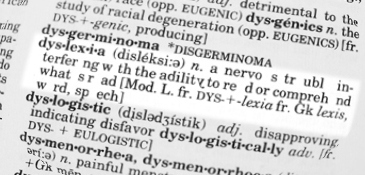 My perception and understanding of dyslexia, and in turn, of myself, took a dramatic leap forward a few years back when I discovered the Rawson Saunders school in my area that caters specifically to dyslexic students. The school was hosting a special screening of The Big Picture: Rethinking Dyslexia and I was invited. My world shifted profoundly as I recognized myself in the experiences of others for the very first time. Thus began my personal journey to understanding of what dyslexia is and is not. Since then I have written many articles about dyslexia and have done numerous presentations for parents and educators about the condition. For Dyslexia Awareness month I offer a concise shortlist of dyslexia articles I’ve written.
My perception and understanding of dyslexia, and in turn, of myself, took a dramatic leap forward a few years back when I discovered the Rawson Saunders school in my area that caters specifically to dyslexic students. The school was hosting a special screening of The Big Picture: Rethinking Dyslexia and I was invited. My world shifted profoundly as I recognized myself in the experiences of others for the very first time. Thus began my personal journey to understanding of what dyslexia is and is not. Since then I have written many articles about dyslexia and have done numerous presentations for parents and educators about the condition. For Dyslexia Awareness month I offer a concise shortlist of dyslexia articles I’ve written.
For anyone reading this blog, I would like to hear about your journey, either with dyslexia or in working with someone with dyslexia
Here is where it all started, my screening of The Big Picture, Rethinking Dyslexia.
A follow-up to The Big Picture documentary, where I share a few facts I found interesting about dyslexia.
Tools and Strategies for Dealing with Dyslexia: Reading Aloud
Tools and Strategies for dealing with Dysgraphia: Writing with Confidence
Alleviating the Complications of Shame for Dyslexic Children.
Ways to communicate with and encourage children with dyslexia.
Parenting with Dyslexia: Reading with your Kids
Creative Writing and Dyslexia may seem like an unlikely combination, but some of our most talented writers have dyslexia.
A brief look at the genetic links (nature) to dyslexia and how nurture (outside help) and hard work can help to conquer what nature dealt us.
Discover how hero narratives have the power to change our conscious belief systems—especially our beliefs about ourselves and what we are capable of doing.
Taken from one of my presentations about dyslexia; see how fostering the love of story can help motivate the at-risk, struggling reader.
The upside to being dyslexic.
It may seem basic, but read about how the words we use can have a positive influence on the struggling reader.
For last year’s teacher appreciation month I talked about one of my teachers that had a profound impact on my early life when my dyslexia was first diagnosed.
A great interview with Perry Stokes of the Rawson Saunders School where dyslexia means extraordinary.
Everyone Fails at First. Learn how that simple acknowledgement can have a profound impact on the struggling student.
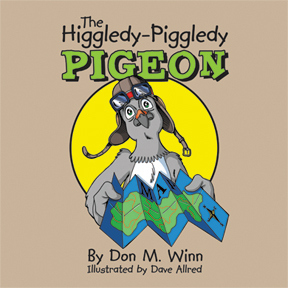 Also check out my dyslexia-inspired picture book, The Higgledy-Piggledy Pigeon. It’s the story of a carrier pigeon named Hank who starts flight school full of hope, but soon learns he has a terrible sense of direction due to dyslexia. Hank’s caring teacher patiently encourages him and helps him learn to compensate for his learning difference and this has a tremendous impact on his life.
Also check out my dyslexia-inspired picture book, The Higgledy-Piggledy Pigeon. It’s the story of a carrier pigeon named Hank who starts flight school full of hope, but soon learns he has a terrible sense of direction due to dyslexia. Hank’s caring teacher patiently encourages him and helps him learn to compensate for his learning difference and this has a tremendous impact on his life.
View The Higgledy-Piggledy Pigeon video.


September 7, 2015
Tiger, Tiger, Burning Bright: A Visit to Tiger Creek Wildlife Refuge
 It’s not often that I have an occasion to reflect on 18th century British poetry, but last week I visited some lovely big cats in northeast Texas and found myself thinking of William Blake’s 1794 poem, The Tiger. Just as Blake was moved to write his poem after having viewed such special animals, I too am moved to write in order to share my experience and encourage all to make a visit to see these fantastic cats.
It’s not often that I have an occasion to reflect on 18th century British poetry, but last week I visited some lovely big cats in northeast Texas and found myself thinking of William Blake’s 1794 poem, The Tiger. Just as Blake was moved to write his poem after having viewed such special animals, I too am moved to write in order to share my experience and encourage all to make a visit to see these fantastic cats.
Tiger Creek Wildlife Rescue is located outside Tyler, TX. It offers an amazing opportunity to see thirty-eight magnificent animals, most of whom have been rescued and provided a forever-home. The refuge began in 1997 to offer homes to retired circus animals, wildlife rescues, and especially since the ”exotic market” boom of the 1990s, animals bought as pets who could not be kept. Abandoned, displaced, or neglected big cats from other species have also joined the Tiger Creek family.
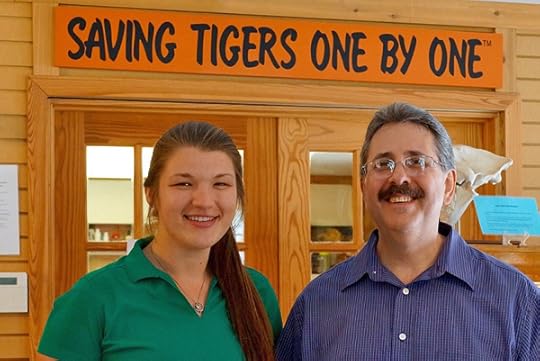
With head trainer Ariel Klein
Head trainer Ariel Klein shared some interesting facts with me during my visit. There’s a big difference between “tame” and “domesticated” animals. Just because cubs are advertised for sale does not mean they will ever be pet material. These cats are wild, and while they can at times be tamed to the will of humans, they will always be wild animals. Though training does take place in the sanctuary, it is for medical purposes only. Teaching the animals commands so that their health needs can be cared for safely is Ariel’s responsibility, and special tours can be arranged to watch these engaging sessions.

Sakima the Tiger
Many of the animals were purchased as status pets (Michael Jackson’s tiger Sierra now resides here) and as they grew, the enormity of caring for a large wild animal exceeded the ability of its purchaser. Huge cats with huge paws, huge claws, and even more huge teeth have no business living in people’s homes! Sadly, many owners have declawed their big cats or even had their teeth pulled in an effort to reduce damage to their home. But when a cat is declawed, it removes the last joint of each toe, flattening their feet and causing arthritis. Removing the teeth of a creature that naturally eats its prey, bones and all, means nutrition will always be compromised, and bone density will suffer. Some of these cats were even fed a diet exclusively comprised of dry cat food! As you can imagine, many were in dire health when they arrived at the sanctuary. Some are blind as a result of injuries or malnourishment; others have lost limbs.
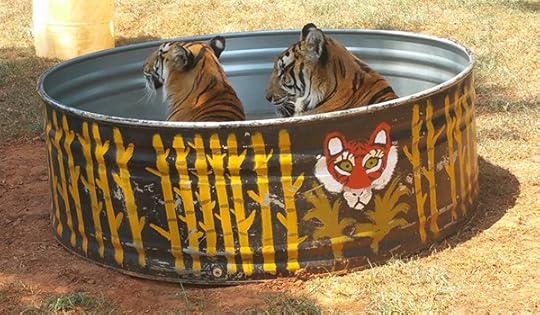
Tigers in the Pool
The folks at the sanctuary spare no expense in caring for these injured, traumatized cats. In fact, they are in the process of building a larger medical facility with more space for quarantining new animals, which allows more private recovery time for new acquisitions before they join the other residents.
As part of ongoing research at a fellow facility, the Tiger Missing Link Foundation, each animal is tested for DNA markers, sometimes with remarkable results. One cat was found to be a rare Indochinese tiger, a subspecies not represented in captivity in any zoos. In an effort to prevent extinction, every tiger matters, and diversity must be documented and preserved. The Foundation has created a stud book to preserve genetic diversity as part of that goal.
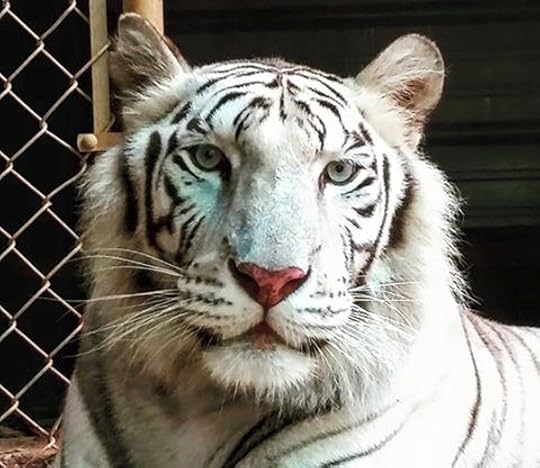
Nishchala the Tiger
Guided tours of the sanctuary take about 45 minutes, after which visitors can stay and observe the animals as desired. A few of the cats are rather shy (Bob the bobcat is blind and likes to keep to himself) but most are easily viewable in their enclosures, taking cat-naps, frolicking in their pools of fresh water, or playing with their toys. Some can be heard to “chuff” a sound made in greeting, others rub their heads along the fencing, marking territory like their cousin the house cat, just in bigger style.
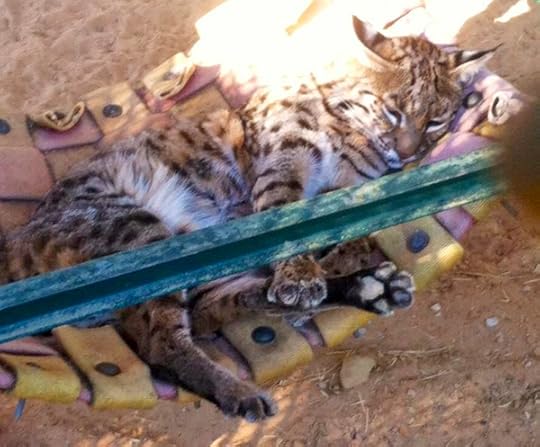
Bob the Bobcat

Sarge the Tiger
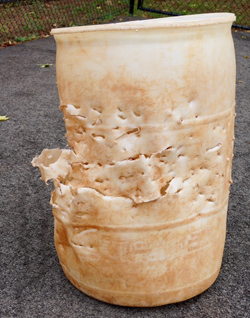
Sarge’s Chew Toy
Sarge, a male Siberian weighing in at over 450 pounds, entertains guests by strutting around his enclosure, tossing his favorite toys. The observation walkway in front of his enclosure is decorated with his handiwork, shredded 55 gallon drums, and large galvanized buckets bearing the piercings from his canine teeth, big enough to put a large carrot through.
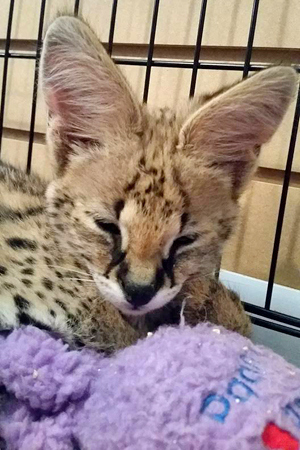
Serval Kitten
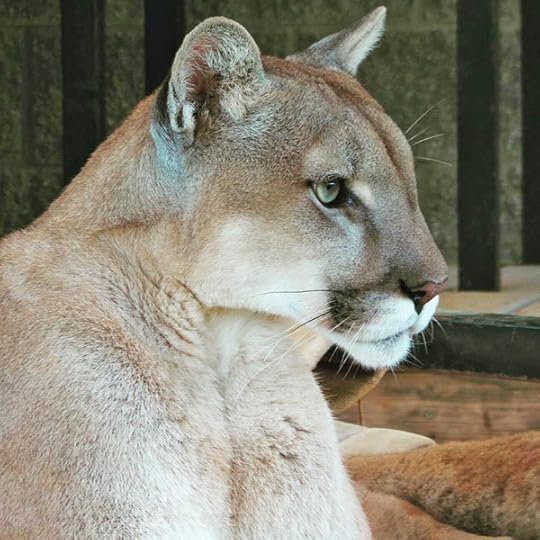
Tin Cup the Puma
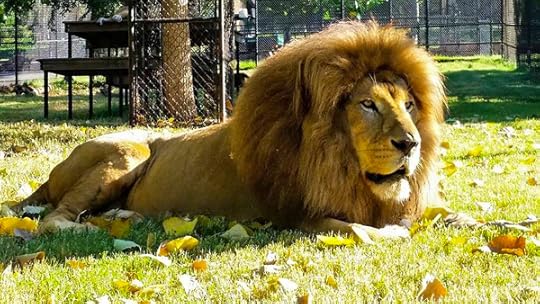
Pepe the Lion
Rare golden tabby tigers, white tigers, pumas, African lions, and even Serval babies round out the Tiger Creek family. The cats eat from 10-15lbs of fresh meat daily, depending on the size of the cat. Road kill is never used, nor are euthanized animals suitable, since the drugs causing their demise would harm the cats. Expenses are high, but many opportunities exist to help share the cost.
Tiger Creek Website: http://www.tigercreek.org
To Donate: https://salsa4.salsalabs.com/o/51170/donate_page/donate?track=EW0101
To return to William Blake— after he viewed the tiger’s fiery-colored stripes, the sheer power of its symmetry, and the glinting intelligence of its eyes; as he contemplated the sinewy heart needed to sustain such a beast and the sheer size of the huge paws, he asked the question:
When the stars threw down their spears,
And water’d heaven with their tears,
Did He smile His work to see?
Did He who made the lamb make thee?
I know I certainly smiled as I observed the beauty of these big cats, frolicking in their thoughtfully created environments.
To read the whole poem: http://www.bartleby.com/101/489.html


September 3, 2015
Legend, Part One
Work is underway for Legend of the Forest Beast, book 3 of the Sir Kaye, the Boy Knight series. In crafting this story, the topic of legend and its powerful influence on humans has totally captivated me.
Legend is defined as “a non-historical or unverifiable story handed down by tradition from earlier times and popularly accepted as historical.” It comes from the Latin word legenda, meaning “things to be read.”
Long before the human family had mass communication, electronics, or conveniences like the telephone, we communicated through story. Stories were told verbally at first, then through the more widespread use of the written word. Narratives have played such an important role in the development of humanity that it defies the constraints of this venue to describe.
Suffice it to say that folklore, fables, mythology, and sagas, all of which fall under the umbrella of legend, offer windows of understanding into our own history as a species. They describe courage, steadfastness, weaknesses, tribulations, clanging failures and brilliant successes, all universal aspects of our humanity. The stories and legends handed down over hundreds and thousands of years reassure us that we are not somehow secretly different from other folks, causing us to fear detection as outliers. They teach us about motivation, offering insight into how the mind and the human psyche work. They postulate explanations about unknowns. Frequently they shape belief, and thereby, behavior.
Legends can be lengthy, like the tales of King Arthur, or pithy, as in the declaration “Here be dragons” inked onto the borders of old maps. In the case of the latter, how many generations of would-be travelers and explorers were given pause as they contemplated facing those dragons, or, worse, sailing off the edge of a flat earth? Many legends play on the fear of the unknown.
You see, it is this precise phenomenon that has me so captivated. At what point does the mind choose to believe something, however unsupportable, and to believe with such a vested interest in it that it causes one to change their life, goals, or actions?
Fears and phobias, courtly love, wanderlust, morality tales, coming-of-age narratives, tales of hidden treasure, or paths to unlimited power—all have been the stuff of legend. And legend has often become belief.
A modern example of this actuality is the ongoing search for Plato’s lost city of Atlantis. Tremendous investments of time and money have gone into the search for this legendary city. Even geneticists have jumped on the bandwagon, citing genetic evidence that humans with certain genetic markers originated in the Mediterranean area and spread westward over the Atlantic rather than eastward over the Bering Strait as an indication that there must be a lost island civilization somewhere in-between—aka Atlantis.
An exploration of legend becomes a fascinating lens through which to peer at ourselves. Curiosity about the influences that shape us can be both edifying and helpful, in that we can begin to recognize beliefs that may not be in our best interests. I’ll be exploring this topic in more detail in future blog posts as Legend of the Forest Beast continues to be developed.


September 2, 2015
Help! My Child is Being Bullied!
It’s fair to say that bullying has been around for as long as mankind has walked the earth. Remember the story of Cain and Able? Bullying was certainly part of my childhood from the first day I went to school through my teen years. Mostly it was limited to verbal attacks (mean jokes and teasing), but on rare occasions it could cross the line to something physical.
It’s important for parents and educators to recognize, however, that even when bullying doesn’t become physical, words can hurt. Verbal abuse and bullying can cause serious emotional damage over time. Today bullying has crossed another threshold, the internet, with the advent of social media. Hateful speech, photos, and videos–all posted for everyone to see and share–these are the new tools for causing human misery and angst.
Cyber-bullying is a growing problem that has tragically resulted in an alarming number of teen suicides. According to the CDC, suicide is the third leading cause of death among young people, resulting in about 4,400 deaths per year and for every suicide among young people, there are at least 100 suicide attempts. A study in Britain found that at least half of suicides among young people are related to bullying. Click here to read some bullying statistics.
What can parents do to help their children deal with peer pressure and bullying in all its many forms?
Because October is Bullying Awareness Month I’d like to share with you two Moms’ Choice award-winning books about bullying and peer pressure.
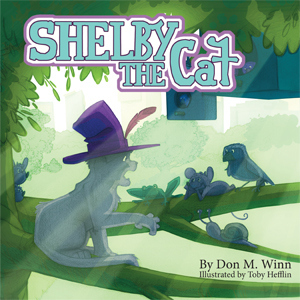 The first is a picture book for young children called Shelby the Cat. Shelby loves to read and tell stories. He makes friends with birds, mice, and even dogs. This makes the alley cats look bad, so they try to force Shelby to be more like them. Shelby refuses. He knows who he is and won’t let anyone pressure him to be different. This is a great book to start conversations about dealing with bullying and peer pressure.
The first is a picture book for young children called Shelby the Cat. Shelby loves to read and tell stories. He makes friends with birds, mice, and even dogs. This makes the alley cats look bad, so they try to force Shelby to be more like them. Shelby refuses. He knows who he is and won’t let anyone pressure him to be different. This is a great book to start conversations about dealing with bullying and peer pressure.
Watch the Shelby the Cat video trailer.
When parents read Shelby the Cat with their children they can use the story to help their children develop coping skills. The book includes questions at the end of the story to give parents a jumping-off point for starting discussions with their children. Having conversations with kids about peer pressure and bullying before they start school will help them to be better prepared to recognize it when it happens, better equipped to deal with it, and more likely to keep parents informed.
 The book I recommend for tweens and teens (and parents too!) is called The Greenlee Project by Amanda M. Thrasher. This remarkable work addresses the issue of cyber-bullying. Amanda has agreed to be interviewed about The Greenlee Project and to tell us what inspired her to write the story.
The book I recommend for tweens and teens (and parents too!) is called The Greenlee Project by Amanda M. Thrasher. This remarkable work addresses the issue of cyber-bullying. Amanda has agreed to be interviewed about The Greenlee Project and to tell us what inspired her to write the story.
Don: Did you ever experience bullying when you were young?
Amanda: We moved several times when I was a child. So yes, I was exposed to bullying. Unfortunately one time in particular I was involved in a physical encounter with another student. I can honestly say things were so different when I was growing up, truly. I grew up in England. Small schools, uniforms, scripture readings, and service, all before class started. If a problem occurred we were taught to figure it out. Handle it. And we did. It wasn’t pretty. I’m a small adult, but I was a tiny girl. Standing up for myself shocked the other student involved. We both came out of it and were friends after that. The situation was addressed once. Once. It’s not like that today; it goes on and on and on. Therein lies the problem; the damage caused by technology is continual, uncontainable, and horrific.
Don: Where does your interest/concern about bullying originate?
Amanda: Most parents worry about bullying at some point during their children’s school years, and I’m no exception to that rule. I don’t want my kids to end up victims, and I certainly do not want my kids to participate in such awful acts. But my concern has been heightened due to the horrendous accounts in the news, locally, nationally, and internationally. Kids are inflicting irreversible damage upon each other through bullying acts that attack their characters, reputations, and more.
Bullying has been around forever, yes, but it didn’t go viral. When it does, the humiliation is tenfold. Our kids have powerful tools in their hands—smart-phones, tablets, laptops, apps, etc.–and they are using them irresponsibly. The kids on the receiving end of the damage are too young to weather the storm, and are tragically opting to end their lives. Children killing themselves over texts and videos is atrocious to me. And as disturbing as this is, it’s just as disturbing when a twelve- or thirteen-year-old—a child—is convicted because of a text. What is going on? We’ve got kids killing themselves, and kids being convicted over cell phone texts and videos. Tragic.
Don: What inspired you to write The Greenlee Project?
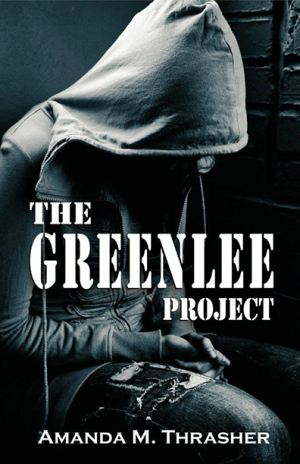 Amanda: I was inspired to write The Greenlee Project for several reasons. Some of those reasons came from news stories, including the horrific Amanda Todd case. Other news stories that moved me to write involved eleven-year-old kids hanging themselves in the closet because kids said they hated them and a fourteen-year-old drinking bleach because everyone tortured her at school. These are only a few cases. Kids as young as eleven are killing themselves over pictures, texts and videos.
Amanda: I was inspired to write The Greenlee Project for several reasons. Some of those reasons came from news stories, including the horrific Amanda Todd case. Other news stories that moved me to write involved eleven-year-old kids hanging themselves in the closet because kids said they hated them and a fourteen-year-old drinking bleach because everyone tortured her at school. These are only a few cases. Kids as young as eleven are killing themselves over pictures, texts and videos.
The straw that broke the camel’s back for me was the tragic court case of a teen being punished for contributing to another child’s suicide. The judge was furious because the teen hadn’t shown enough remorse for her actions or for sending the final text that pushed the child over the edge. My first thought, in tears, was for the child that was gone. My second was for the kid in the courtroom. She was a kid. She had no idea of the magnitude of the devastation her actions had caused. When she’s an adult, she’ll have a clue. My third thought was for the families of both of these kids. The Greenlee Project addresses both sides. It’s not a book just for the victim. It’s about the victim, Greenlee, yes. But it’s also about great kids making bad decisions, and through the touch of a button, it all goes wrong. It helps people see how these actions affect the victim, the bully, families, friends, and the community once they realize what’s happened. Topping it off, the resolution is a twist. But I believe this book, of all my pieces so far, has the strongest message, and I hope it’s one that will help prevent kids from being so cruel to each other. It will teach them to think and be kind, before it’s too late.
You can find both books on Amazon.com and other online retailers.
Amazon links:
Shelby the Cat
The Greenlee Project
Author/Publisher pages:
Shelby the Cat by Don M. Winn
The Greenlee Project by Amanda Thrasher


August 3, 2015
The Family Story, Part Three: Handing Down our Family Stories
 In last week’s blog we interviewed professional genealogist Patricia Divjak on how DNA is helping to reconstruct missing family history. Today Patricia will discuss ways that parents and grandparents can begin sharing their family stories with their children.
In last week’s blog we interviewed professional genealogist Patricia Divjak on how DNA is helping to reconstruct missing family history. Today Patricia will discuss ways that parents and grandparents can begin sharing their family stories with their children.
Don: When you consider the lengths to which your research has taken you, what would it have meant to you to have oral or written histories handed down through your family?
Patricia: My great grandfather, John Winn, had a wonderful habit of writing lengthy and descriptive letters to his children. It’s difficult to convey the magnitude of personal and emotional satisfaction a descendant receives from these “gifts” from the past. Written history provides insight into the life, personality, and times of our ancestor. Oral history is valuable as a guideline for research that culminates with actual documents. Genealogists are always looking for clues to solve “the family puzzle.” Certainly, I would have saved many dollars if these family histories were available to me. However, I would have missed all the excitement of the journey, going to the home locations of my ancestors, standing at their grave sites, and meeting very wonderful, kind, and helpful people along the way. DNA evidence is the icing on the cake: validation that the DNA of your ancestors lives on in you!
Don: Was there anything that interested you as a child about your family characters and stories?
Patricia: As a child, I was drawn to fictional stories of the South during and after the Civil War. Even though I knew that my father was born in Nashville, Tennessee, I had no idea how deep my southern roots were embedded in my pysche/DNA. I was born in the Midwest and the Civil War history I learned was from that point of reference. In 2007, I finally returned to my family’s hometown for over 100 years, Murfreesboro, TN. Deja vu doesn’t come close to describing the feeling of “coming home” that I experienced. My father, before he died, left me with two clues about his family in Murfreesboro: Ancestor: Civil War Captain in the Confederacy. Ancestor: Policeman killed in the line of duty. I discovered through my visits to this fine city that the “Captain” was my 2nd great grandfather, Captain Edwin Arnold and that his son, the policeman, was my great grandfather, Joseph E. Arnold, Chief of Police of Murfreesboro until 1911.
Don: Why should parents take an interest in family history?
Patricia: My belief is that each child has an innate curiosity about their family history. Having a record of your family history helps your child to learn their place in this long line of people who had their own struggles, challenges and victories. I can only speak as an adult regarding my own feelings of completeness and self-esteem gained by the knowledge of my ancestors lives and stories. In every family history there were choices made by our ancestors that were not the best. However, they are difficult to separate out from the threads of the rest of the story and add to the humanity of the story.
Don: What encouragement would you offer parents, grandparents, aunts, and uncles, regarding passing down oral and written histories to upcoming generations?
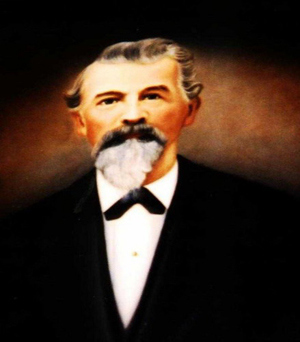
Captain Edward Arnold 1818-1884
Patricia: I would encourage parents and grandparents and extended family to begin writing their own memoirs. We feel that we live “ordinary lives” but when one steps back and reviews the story, there are many smaller stories and choices within the story. Doing this will also give future generations insight into our place in history, the events that were going on in the country and the world which affected our lives. Hopefully, our families of the future will draw courage and inspiration from the character and courage we have shown. A thought to remember: One day, we will all be “ancestors.” Wouldn’t you want your grandchildren and great grandchildren to know who you were?
Don: Do you have any suggestions that can help in getting kids interested in family history?
Patricia: Visit places of historical significance in United States history. I would begin with Jamestowne Colony, VA (founded 1607) and Plymouth, MA. If there is a place in your own family history that has historical value for your family, begin there and tell them the story of their ancestors, their struggles to migrate and settle this great land, the occupations of their ancestors, etc. If immigration was later through Ellis Island, visit the Ellis Island website and teach them about the opportunity that began when these immigrants crossed that threshold and began a new life. Our ancestors’ lives had value, their lives were not easy, they were human and we stand on their shoulders.
Don: What’s the best way to get started with family research?
Patricia: Begin with the information that you know about your parents and if they are still living, interview them, asking questions about where they were born, when they were born, their parents’ names—including female maiden names. Gather as much information as you can from other family members. There are many subscription sites and it is my feeling that Ancestry.com is among the best. Familysearch.org is a subscription free alternative. Since this conversation has been directed at the connections between DNA and family history, educate yourself about DNA through the International Society of Genetic Genealogy. They have a DNA Newbie Group! The bottom line is that it will take some time and effort to work with your DNA matches/cousins but the reward is phenomenal!
I’d like to thank Patricia for her generosity in sharing her expertise for this blog. And if you have any questions for Patricia or me, please post them here and we’ll do our best to answer them for you.
About Patricia Divjak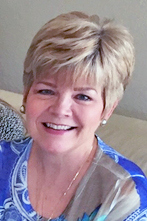 Patricia Divjak has been active in genealogy research for 20 years and is the author of two family history books. She is an expert lineage researcher, assisting over 75 women in joining the National Society of Daughters of the American Revolution. She was a successful Past Regent and Registrar for the San Diego Chapter, NSDAR. She is also a member of the Jamestowne Society and the Colonial Dames of the Seventeenth Century as well as the National Society Daughters of the War of 1812. She is a member of the International Society of Genetic Genealogists. Her current project is a compilation of stories of her female ancestors and how they inspired generations of their descendants to follow their dreams.
Patricia Divjak has been active in genealogy research for 20 years and is the author of two family history books. She is an expert lineage researcher, assisting over 75 women in joining the National Society of Daughters of the American Revolution. She was a successful Past Regent and Registrar for the San Diego Chapter, NSDAR. She is also a member of the Jamestowne Society and the Colonial Dames of the Seventeenth Century as well as the National Society Daughters of the War of 1812. She is a member of the International Society of Genetic Genealogists. Her current project is a compilation of stories of her female ancestors and how they inspired generations of their descendants to follow their dreams.


The Family Story, Part Two: A New Way of Tracing Family Origins
Last week we talked about how family history and stories are frequently lost from one generation to the next and how DNA, along with good old-fashioned sleuthing, can help to reconstruct our family origins. In today’s blog, I’ll be interviewing professional genealogist Patricia Divjak on how DNA is being used to help reconstruct missing family history.
Don: When did you first get involved with using DNA in ancestry research and why?
Patricia: I became interested in Y-DNA several years ago while documenting my father’s surname line. I had clues that his family was from Colonial Virginia. I was working with a County Archivist at the time and they found the documentation that I needed to confirm father/son relationship for my 2nd and 3rd great grandfathers. When my nephew had his Y-DNA tested through Family Tree DNA, we found our genetic cousins all originally came from Mecklenburg County, VA. It’s a great benefit for all when cousins can collaborate and share information.
Don: How has ancestry DNA research changed since you started with it?
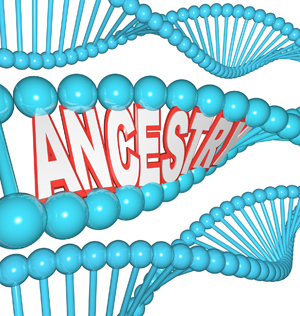 Patricia: Y-DNA (male line) has been around for years and our knowledge of how to interpret the results has increased as more people become involved in the testing process. As a result, the interest in autosomal testing (DNA inherited from mother and father, grandmother’s and grandfather’s etc.) has increased significantly. We have the ability to reconnect with our genetic cousins, long since separated, because of migrations for jobs, adventure and other reasons. There are new “tools” and “apps” to assist the genetic genealogist in comparing the information on 22 chromosomes and the 23rd sex (X chromosome). Some examples of these comparison tools are DNA Match and Gedmatch.com.
Patricia: Y-DNA (male line) has been around for years and our knowledge of how to interpret the results has increased as more people become involved in the testing process. As a result, the interest in autosomal testing (DNA inherited from mother and father, grandmother’s and grandfather’s etc.) has increased significantly. We have the ability to reconnect with our genetic cousins, long since separated, because of migrations for jobs, adventure and other reasons. There are new “tools” and “apps” to assist the genetic genealogist in comparing the information on 22 chromosomes and the 23rd sex (X chromosome). Some examples of these comparison tools are DNA Match and Gedmatch.com.
Don: What can DNA tell us about ancestry?
Patricia: DNA is the unique genetic blueprint that every person has, and it is inherited from our parents and their parents before them. We all have tiny bits of DNA from our ancestors who lived many generations ago. It can also give us information about our genetic make-up by world region.
Don: What is Y-DNA and what does it tell us?
Patricia: Y-DNA is passed from a father to his son, and to his son’s son, and on down through the male side of the family. It is one type of DNA that can remain much the same and stable for many generations. It’s reach at the present time, along with documented lineage, can give us information about ancestors born in the 1700s. Presently, men looking for or wanting to verify their ancestral surname can join surname study groups.
Don: How far back can you link ancestry, connect with cousins etc.?
Patricia: Our autosomal DNA is the DNA we inherit from both our parents. Each of us has DNA that will match most closely with our immediate family members such as our mother, father, sister, or brother. We inherit half of our DNA from each parent and about one-fourth of our DNA is inherited from each of our four grandparents. It follows that the more distant the cousin relationship or grandparent relationship, the less DNA will be shared in common. Projections by the major testing sites indicate that you may have DNA matches that reach back in time for 6 to 7 generations but experience has shown us that it indeed may reach beyond 9 to 10 generations
Don: What sort of surprises have you found in your research?
Patricia: My genetic cousins are as curious about me as I am about them. We all bring our set of experiences, family stories, and documentation to the table to share. This combined knowledge can open doors and break down genealogy “log jams” or “brick walls.” DNA genetic genealogy requires patience and determination.
If you have a well-researched family tree, Y-DNA and autosomal DNA testing may well confirm your paper trail through the DNA segments (technical name is centimorgans) that you share with members of the DNA testing community. The higher the number of centimorgans that you share, the closer the relationship. It is an interesting journey as you meet new cousins and add their stories to the collective family tree! It is fulfilling and exciting as you meet long lost cousins and realize that we are, after all, one BIG family!
In our next blog we’ll continue with Part 3 of The Family Story where Patricia discusses ways that parents and grandparents can begin sharing their family stories with their children.
About Patricia Divjak Patricia Divjak has been active in genealogy research for 20 years and is the author of two family history books. She is an expert lineage researcher, assisting over 75 women in joining the National Society of Daughters of the American Revolution. She was a successful Past Regent and Registrar for the San Diego Chapter, NSDAR. She is also a member of the Jamestowne Society and the Colonial Dames of the Seventeenth Century as well as the National Society Daughters of the War of 1812. She is a member of the International Society of Genetic Genealogists. Her current project is a compilation of stories of her female ancestors and how they inspired generations of their descendants to follow their dreams.
Patricia Divjak has been active in genealogy research for 20 years and is the author of two family history books. She is an expert lineage researcher, assisting over 75 women in joining the National Society of Daughters of the American Revolution. She was a successful Past Regent and Registrar for the San Diego Chapter, NSDAR. She is also a member of the Jamestowne Society and the Colonial Dames of the Seventeenth Century as well as the National Society Daughters of the War of 1812. She is a member of the International Society of Genetic Genealogists. Her current project is a compilation of stories of her female ancestors and how they inspired generations of their descendants to follow their dreams.










